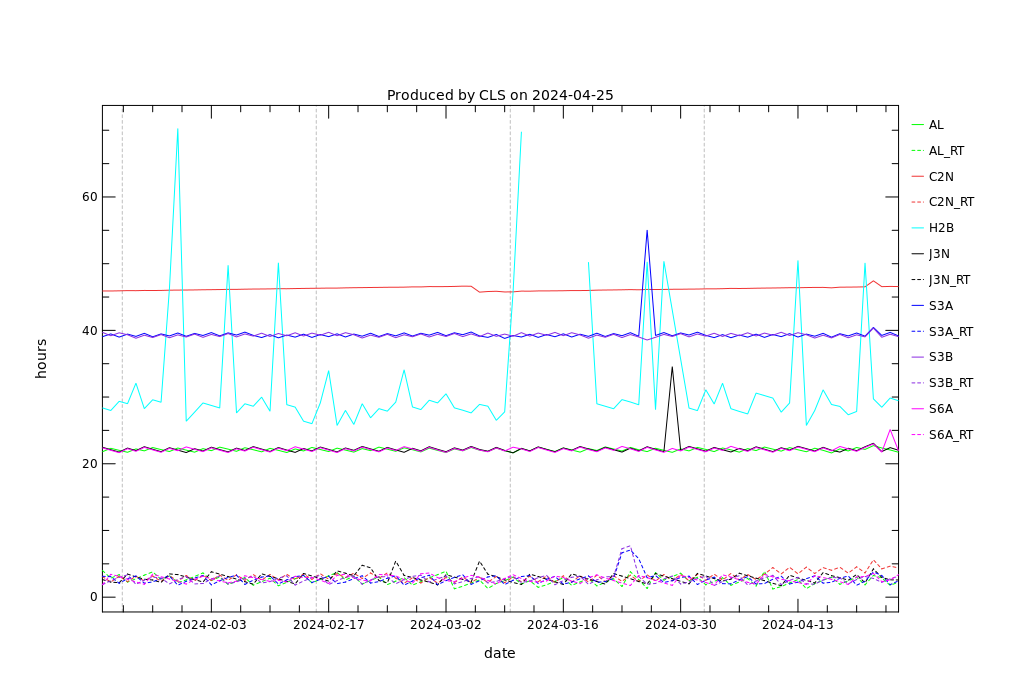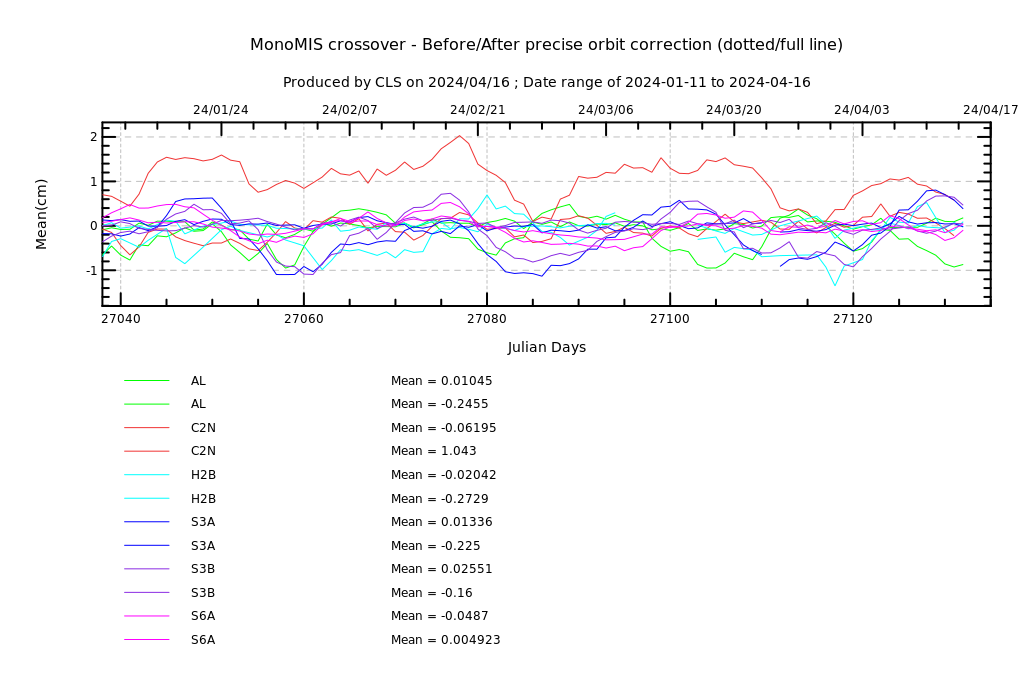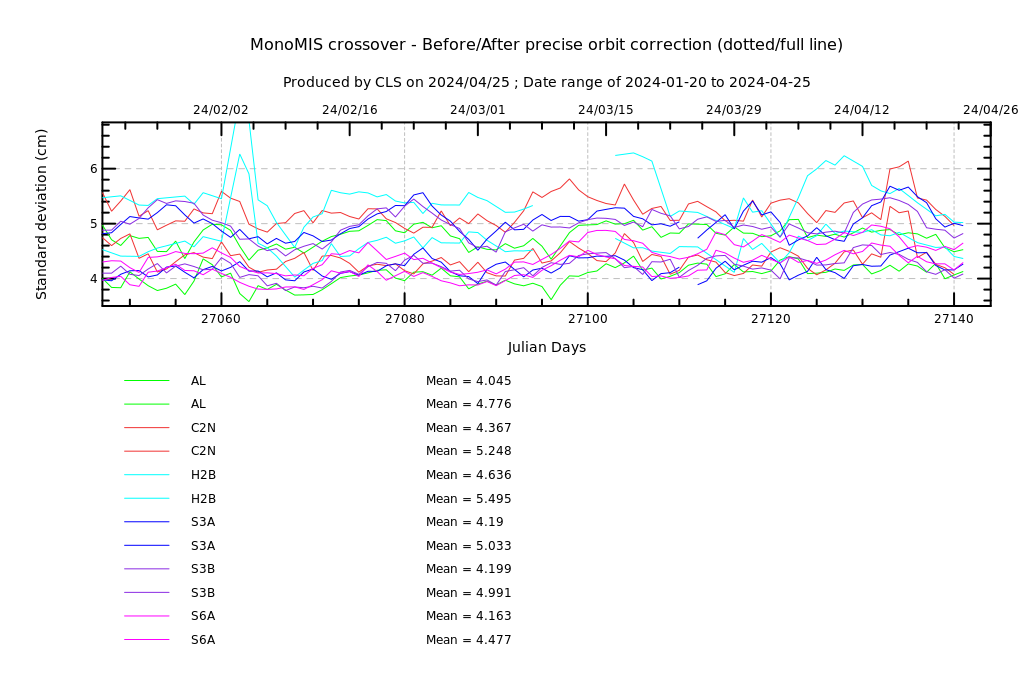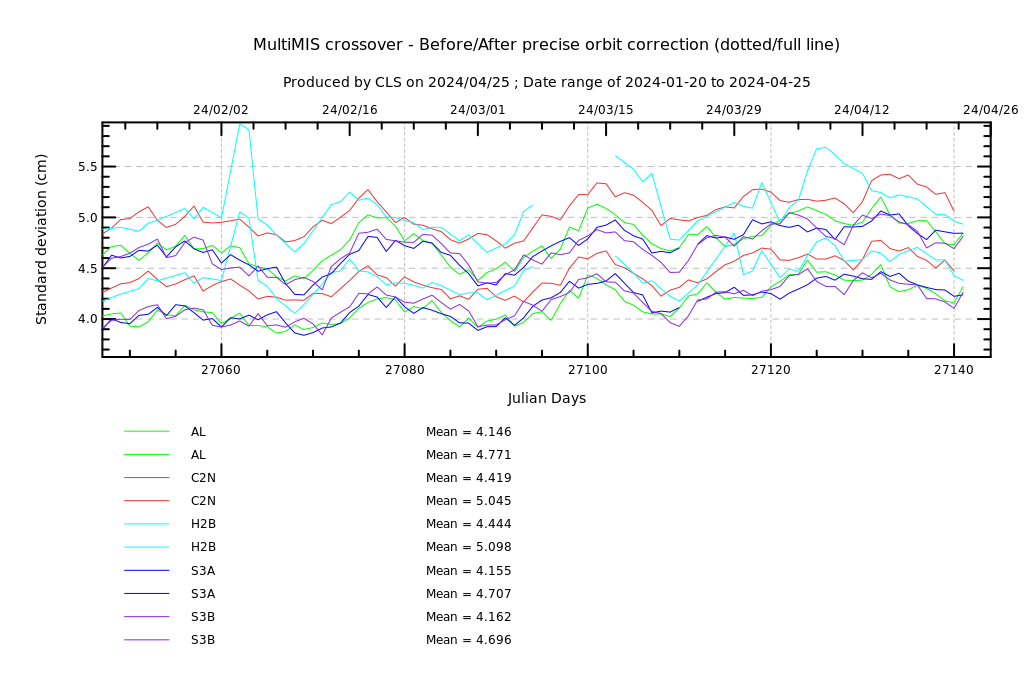Level 2 Plus (L2P) upstream altimeter data are used as input of the DUACS processing system (see upstream data description).
Data freshness
The following figure presents the monitoring of the aging of the last measurement available at the start time of the DUACS processing. The IGDR/STC (see DUACS processing) products are usually processed with a 24 to 48h delay; OGDR/NRT (see DUACS processing) products are usually processed with few hours delay.

L2P data quality
The following figures present the statistics (mean, number of measurement and standard deviation) at mono- and multi-mission cross-over locations, before and after calibration processing. Only cross-over with time lag less than 10 days are selected; the metric is computed with a 7 days sampling.
The metric highlights the consistency of the measurements between ascending and descending passes of the reference mission (mono-mission cross-over locations), and between complementary/opportunity and reference mission (multi-mission cross-over locations).
This metric is computed over the Global Ocean. The number of cross over locations depends on the orbit of the satellites and the observed annual cycle is due to the ice coverage close to the pole.





